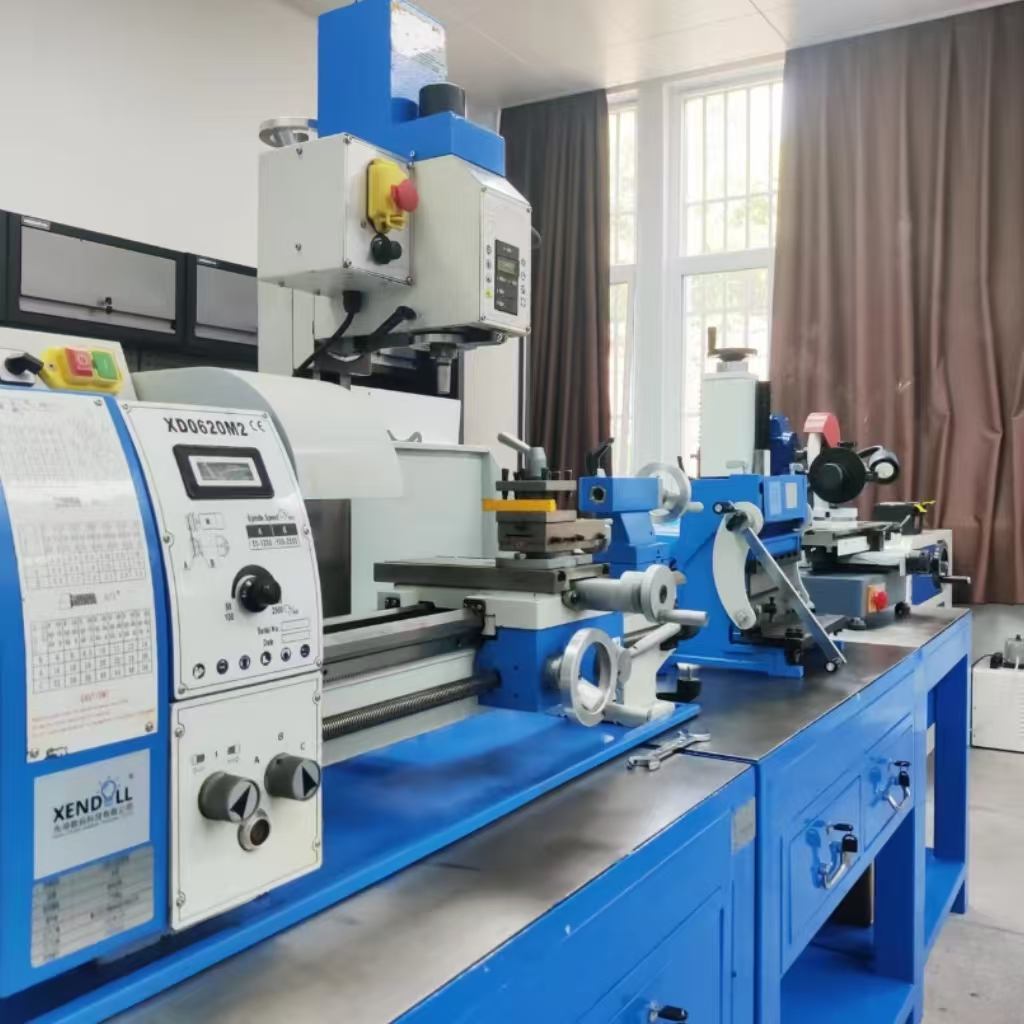At first glance, wood lathes and metal lathes might seem to serve a similar purpose: they both rotate a workpiece against a cutting tool to shape it. For hobbyists, educators, and equipment dealers exploring the world of machining, this similarity can lead to confusion. However, assuming these machines are interchangeable is a fundamental mistake. The core differences lie in their construction, operation, and intended materials, stemming from the vastly different physical properties of wood and metal. Understanding these distinctions is crucial for selecting the right equipment, ensuring project success, and maintaining a safe workshop environment. This article will demystify these two essential tools, providing a clear comparison to guide your next purchase, whether you're a mechanical processing enthusiast or a distributor sourcing reliable equipment.
While both are called "lathes," a wood lathe and a metal lathe are engineered for entirely different battles. One is designed for the relatively softer, more forgiving nature of wood, while the other is built to contend with the tough, rigid characteristics of metal.

1. Structural Rigidity and Power
The most significant difference lies in the machine's build and power source.
Metal Lathes: Machining metal requires immense force and precision. Therefore, metal lathes are massively built, often from heavy cast iron or steel, to resist vibration and flexing under high load. They feature a robust leadscrew and feed rod that mechanically move the carriage and toolpost with precision, allowing for accurate threading and consistent feeds. The motor is powerful but typically runs at lower RPMs to generate high torque.
Wood Lathes: Woodworking involves far less resistance. Consequently, wood lathes have a lighter construction. They lack the complex gearbox and leadscrew of a metal lathe. The tool rest is adjusted manually by the operator. The focus is on high rotational speed (RPM) to cleanly slice through wood fibers, not on brute force.
2. Cutting Tool and Technique
This is where the operator's role diverges completely.
Wood Lathe Tools: Cutting on a wood lathe is primarily a freehand skill. The operator uses specialized, often handheld, chisels and gouges. The bevel of the tool rests against the workpiece, and the cut is guided by the craftsman's hands and skill. Sharpness is key, but the tools are generally simple high-carbon or high-speed steel shapes.
Metal Lathe Tools: Metal cutting is a rigid, mechanical process. The cutting tool is firmly locked into a tool post on the carriage. The shape, angle, and material of the cutting bit (often carbide) are scientifically designed to manage chips, heat, and cutting forces. The machine, not the operator's hands, controls the precise path of the cut.
3. Precision and Tolerances
The required level of precision is a key differentiator.
Metal Lathes: These are precision instruments. They are designed to hold extremely tight tolerances, often within thousandths of an inch or hundredths of a millimeter. This is essential for creating parts that must fit together perfectly, such as engine components or threaded fasteners.
Wood Lathes: While precision is important, the tolerances in woodworking are much more forgiving. Wood is a natural material that expands and contracts with humidity. A perfect fit in woodworking is often achieved through sanding and friction, not the micron-level accuracy of a metal part.
4. Versatility and Applications
Their core functions dictate what you can create.
Wood Lathe Applications: A wood lathe is perfect for creating rotational, symmetrical objects. Its primary domain includes furniture legs, bowls, pens, spindles, baseball bats, and other decorative items. The process is often artistic and sculptural.
Metal Lathe Applications: A metal lathe is an industrial workhorse. It is used for machining precise parts like bolts, shafts, pulleys, and bushings. It can perform operations like facing, turning, drilling, boring, knurling, and threading. Its versatility in shaping metal makes it indispensable in fabrication, repair, and engineering.
5. Cost and Accessibility
Generally, a metal lathe represents a larger investment than a wood lathe of comparable size. The required rigidity, precision engineering, gears, and powerful drive systems make it more complex and expensive to manufacture. For a hobbyist starting out, a wood lathe is often the more accessible entry point.
Bridging the Gap with Mini Lathes
For small-scale projects, the lines can blur slightly. Some modern mini lathes, like those offered by Xendoll Tools, are engineered with versatility in mind. While a dedicated metal lathe is irreplaceable for heavy-duty steel work, a high-quality mini lathe can be adept at machining softer metals like aluminum, brass, and plastics. With the right attachments and tooling, it can also handle small woodworking tasks, making it an excellent multi-purpose machine for the advanced hobbyist, model maker, or educational workshop.

Conclusion: Choosing the Right Machine for Your Needs
In summary, the difference between a wood lathe and a metal lathe is not merely semantic; it is a difference of fundamental design philosophy. The wood lathe is a tool for creativity and artistry in a softer medium, relying on the skill of the operator's hands. The metal lathe is a precision engineering instrument, built for strength, accuracy, and repeatability in a tough material.
Your choice ultimately depends on your primary material and desired outcomes. If your world revolves around woodcraft and creating artistic turnings, a dedicated wood lathe is your ideal partner. If you need to fabricate precise, durable metal components, a metal lathe is non-negotiable. For those who work across both realms on a smaller scale, exploring a versatile and robust mini lathe can provide the flexible solution you need to bring all your project ideas to life.
Ready to find the perfect lathe for your workshop? Explore the high-precision, versatile range of mini machining tools at xendolltools.com and equip yourself for success.
 Nov 11, 2025
Nov 11, 2025

 5
5



 Show all our samples
Show all our samples
 Provide you with a free quote
Provide you with a free quote
 Answer all the questions you may have
Answer all the questions you may have
 Guided installation and other options
Guided installation and other options